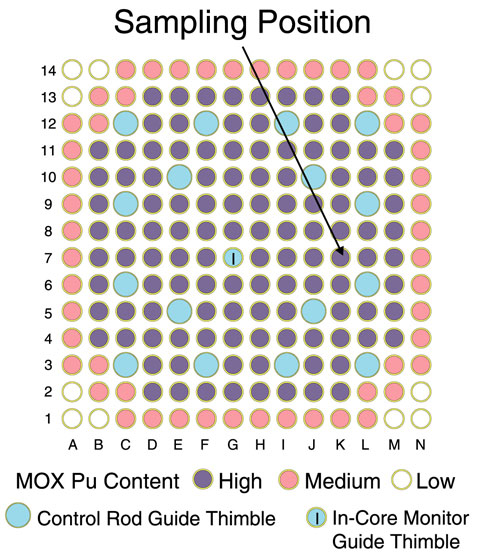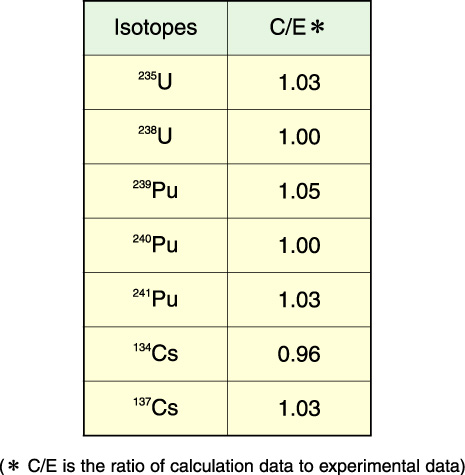
Fig.5-14 Sampling position in MOX fuel assembly for the measurement of nuclide composition
Table 5-1 Analysis of nuclide composition data by SWAT pertaining to the sample shown in Fig.5-14

In nuclear fuels, many nuclides are generated through nuclear reactions such as fission and neutron capture; these nuclides are also converted to other nuclides by nuclear reactions and radioactive decay. Hence, the radioactivity of nuclear fuels changes continuously. It is necessary to estimate the exact number of nuclides in a nuclear fuel in order to evaluate its properties, such as criticality parameters, and to obtain an accurate measure of its radioactivity and heat generation. Hence, we have developed the integrated burnup calculation code system - SWAT.
In this system, the effective neutron reaction cross sections are calculated using SRAC or MVP, which are neutronics calculation code systems developed in the JAEA, and these cross-section data are used by ORIGEN2, which is a widely used burnup calculation code. Furthermore, in order to include the latest available data about the generation ratio of fission products (FP) from neutron fission reactions and the half-lives of the products, the second version of the JNDC FP data library and the JENDL FP decay data library 2000 are also included in the system. Using these libraries, the SWAT system can predict the generation and transmutation of heavy nuclides, i.e., actinides such as uranium and plutonium, and their FP on the basis of the latest data. The sampling position of a fuel pin is shown in Fig.5-14. A fuel sample is taken from the spent nuclear fuel and the nuclide composition is measured after cutting and dissolving the sample. Table 5-1 lists the SWAT analysis of the nuclide composition data for the sample shown in Fig.5-14. SWAT can predict the nuclide compositions of major nuclides within a deviation of 5%.
We have also developed the ORIGEN22UPJ system, which can predict the number of nuclides as precisely as SWAT can, by including the effective neutron reaction cross section data libraries prepared by SWAT in ORIGEN2. This system can give results similar to those given by SWAT. Furthermore, because of its high-speed performance resulting from the use of state-of-the-art computer systems, results can be obtained within a few seconds. Because of these advantages, ORIGEN22UPJ was used for evaluating the radioactivity in the reactors at the time of the Fukushima Daiichi NPS accident. We have been contributing to the evaluation of the accident consequences by the Government of Japan.